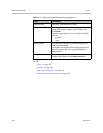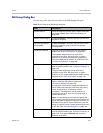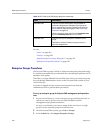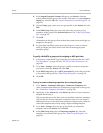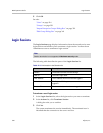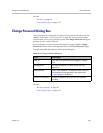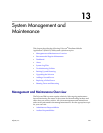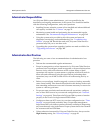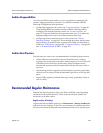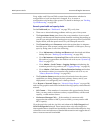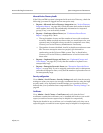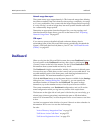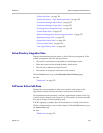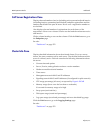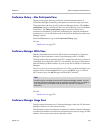
DMA Operations Guide Management and Maintenance Overview
348 Polycom, Inc.
Administrator Responsibilities
As a Polycom DMA system administrator, you’re responsible for the
installation and ongoing maintenance of the system. You should be familiar
with the following configurations, tasks, and operations:
• Installing licenses when the system is first installed and when additional
call capacity is added. See “Licenses” on page 70.
• Monitoring system health and performing the recommended regular
maintenance. See “Recommended Regular Maintenance” on page 349.
• Using the system tools provided to aid with system and network
diagnostics, monitoring, and troubleshooting. See “Troubleshooting
Utilities” on page 380. Should the need arise, Polycom Global Services
personnel may ask you to run these tools.
• Upgrading the system when upgrades/patches are made available. See
“Upgrading the Software” on page 388.
Administrative Best Practices
The following are some of our recommendations for administrative best
practices:
• Perform the recommended regular maintenance.
• Except in emergencies or when instructed to by Polycom Global Services
personnel, don’t reconfigure, install an upgrade, or restore a backup when
there are active calls and conferences on the system. Many of these
operations will require a system restart to complete, which will result in
these calls and conferences being dropped. Before performing these
operations, busy out all MCUs and wait for all conferencing activity to
cease.
• Before you reconfigure, install an upgrade, or restore a backup, manually
create a new backup. Then download and archive this backup in the event
that something unforeseen occurs and it becomes necessary to restore the
system to a known good state.
• For proper name resolution and smooth network operations, configure
two or more DNS servers in your network configuration (see “Network
Settings” on page 64). This allows the Polycom DMA system to function
properly in the event of a single external DNS failure.
• Configure at least one NTP server in your time configuration (see “Time
Settings” on page 69) and preferably three. Proper time management
helps ensure that your cluster operates efficiently and helps in diagnosing
any issues that may arise in the future. Proper system time is also essential
for accurate audit and CDR data.
• Unless otherwise instructed by Polycom Global Services, always use the
High Security setting. See “Security Settings” on page 48.



